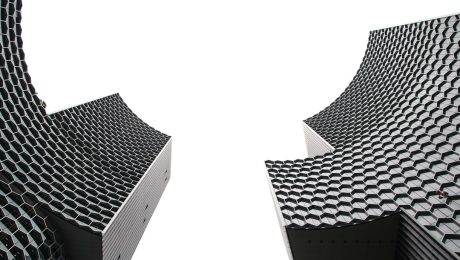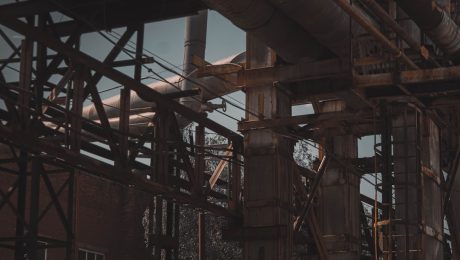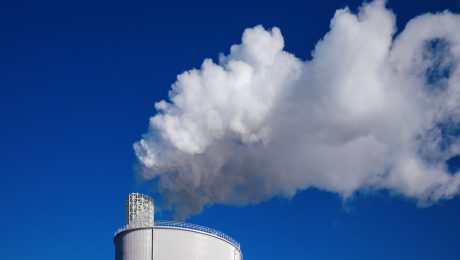The steel industry, a cornerstone of global infrastructure and manufacturing, is constantly evolving. Driven by the relentless pursuit of enhanced performance, sustainability, and cost-effectiveness, Research and Development (R&D) plays a pivotal role in shaping the future of steel product innovation. This exploration delves into the key areas driving this transformation.
1. Advanced Steel Alloys: Pushing the Boundaries of Strength and Durability
The quest for stronger, lighter, and more durable steel has led to significant advancements in alloy development. Researchers are exploring novel compositions incorporating elements like niobium, vanadium, and titanium to refine the microstructure and enhance mechanical properties. These advanced alloys find applications in high-performance sectors such as aerospace, automotive, and construction, where demanding conditions require materials with exceptional strength-to-weight ratios and resistance to fatigue and corrosion. For instance, the development of high-strength low-alloy (HSLA) steels has revolutionized automotive manufacturing, allowing for lighter vehicles with improved fuel efficiency and safety. Furthermore, research into duplex and super duplex stainless steels continues to expand their application in harsh environments, such as offshore oil and gas platforms and chemical processing plants, due to their superior corrosion resistance.
2. Innovative Manufacturing Processes: Efficiency and Precision Redefined
R&D is not limited to material science; it also encompasses the development of innovative manufacturing processes. Techniques like advanced high-strength steel (AHSS) forming, additive manufacturing (3D printing), and near-net shape casting are revolutionizing steel production. AHSS forming, for example, allows for complex geometries and optimized designs, leading to lighter and stronger components. Additive manufacturing offers unparalleled design freedom, enabling the creation of intricate steel parts with complex internal structures that are impossible to produce using traditional methods. Near-net shape casting minimizes material waste and reduces machining time, resulting in increased efficiency and lower production costs. These innovative processes contribute significantly to improved product quality, reduced lead times, and enhanced sustainability.
3. Enhancing Sustainability: Green Steel and Circular Economy Initiatives
The steel industry is increasingly focusing on reducing its environmental footprint. R&D plays a crucial role in developing “green steel” production methods, aiming to minimize carbon emissions and promote resource efficiency. This involves exploring alternative energy sources for steelmaking, such as hydrogen-based processes, and developing carbon capture and storage technologies. Furthermore, research into the circular economy is gaining momentum, with a focus on recycling and reusing steel scrap to minimize the reliance on virgin materials. Life cycle assessments (LCAs) are being employed to evaluate the environmental impact of various steel production and application scenarios, guiding the development of more sustainable practices and products.
4. Surface Engineering: Protecting Steel from Corrosion and Wear
Protecting steel from corrosion and wear is paramount for many applications. Significant R&D efforts are dedicated to surface engineering techniques, including coatings, thermal spraying, and laser surface modification. These methods enhance the durability and lifespan of steel components, reducing maintenance costs and extending their operational life. For instance, advanced coatings can provide enhanced corrosion resistance in harsh environments, while thermal spraying can improve wear resistance in high-friction applications. Laser surface modification allows for precise control of surface properties, tailoring them to specific application requirements. These surface engineering techniques are crucial for optimizing the performance and longevity of steel products across various industries.
5. Smart Steel and Data-Driven Optimization: The Future of Steel Production
The integration of digital technologies is transforming the steel industry. R&D is focused on developing “smart steel” – steel products embedded with sensors and connected to data analytics platforms. This allows for real-time monitoring of structural integrity, performance, and environmental conditions. Data-driven optimization techniques are being employed to improve production efficiency, reduce waste, and enhance product quality. Predictive maintenance models can be developed based on data collected from smart steel components, minimizing downtime and extending their lifespan. This integration of data analytics and smart technologies is paving the way for a more efficient, sustainable, and intelligent steel industry.
In conclusion, R&D is the driving force behind the continuous improvement and innovation in the steel industry. By focusing on advanced alloys, innovative manufacturing processes, sustainable practices, surface engineering, and smart technologies, researchers are pushing the boundaries of what’s possible with steel, creating stronger, lighter, more durable, and sustainable products that meet the ever-evolving demands of a globalized world.
SEO Tags:
Steel Innovation, Steel R&D, Advanced Steel Alloys, Sustainable Steel, Steel Manufacturing
Choosing the right building material is crucial for any construction project. Two titans dominate the structural landscape: concrete and steel. Both offer unique properties and advantages, making the decision a complex one. This in-depth comparison will delve into the key differences between concrete and steel, helping you understand which material is best suited for your needs.
Strength and Structural Capabilities: A Head-to-Head
Concrete boasts exceptional compressive strength, meaning it excels at withstanding crushing forces. This makes it ideal for columns, foundations, and other load-bearing elements where pressure is the primary concern. Steel, on the other hand, possesses superior tensile strength, meaning it can resist stretching and pulling forces. This makes it perfect for beams, girders, and other components subjected to significant tension. In many modern structures, a combination of both materials is used to leverage their respective strengths – concrete for compression and steel for tension, creating a synergistic and highly robust structure. This hybrid approach, often seen in reinforced concrete, allows for the creation of larger spans and more complex designs.
Durability and Lifespan: Weathering the Storm
Concrete’s durability is a significant advantage. When properly mixed and cured, concrete can withstand harsh weather conditions, including extreme temperatures, freeze-thaw cycles, and even chemical exposure. However, concrete is susceptible to cracking, especially if not reinforced properly or if subjected to significant impacts. Steel, while incredibly strong, is vulnerable to corrosion, particularly in environments with high humidity or exposure to saltwater. Protective coatings, such as galvanization or painting, are essential to extend the lifespan of steel structures. The ultimate durability of both materials depends heavily on the quality of materials used, the construction techniques employed, and proper maintenance.
Cost Considerations: Balancing Budget and Performance
The cost of concrete and steel can vary significantly depending on location, availability, and market conditions. Generally, concrete is often perceived as a more economical option for large-scale projects due to its readily available raw materials. However, the cost of steel has fluctuated considerably in recent years due to global supply chain issues and raw material price volatility. The cost-effectiveness of each material also depends on the complexity of the design and the need for reinforcement. A simple concrete structure might be cheaper than a comparable steel structure, but a complex, high-rise building might benefit from the efficiency and speed of steel construction, even if the initial material cost is higher.
Construction Speed and Efficiency: Time is Money
Steel construction often boasts a faster construction timeline compared to concrete. Pre-fabricated steel components can be manufactured off-site and assembled quickly on the construction site, reducing on-site labor and construction time. Concrete, especially in large pours, requires significant curing time, slowing down the overall construction process. However, advancements in concrete technology, such as high-strength concrete and self-consolidating concrete, are reducing curing times and improving efficiency. The choice between steel and concrete concerning construction speed depends largely on the project’s scale and complexity.
Environmental Impact: A Sustainable Choice?
Both concrete and steel production have significant environmental impacts. Concrete manufacturing is a major contributor to carbon dioxide emissions due to the energy required for cement production. Steel production also generates greenhouse gases and consumes significant amounts of energy. However, both industries are actively exploring more sustainable practices, such as using recycled materials, reducing energy consumption, and developing lower-carbon alternatives. The environmental impact of each material should be considered in the context of the entire lifecycle of the structure, from material production to demolition and recycling.
In conclusion, the choice between concrete and steel depends on a variety of factors, including project requirements, budget, timeframe, and environmental considerations. Often, a hybrid approach utilizing the strengths of both materials proves to be the most effective solution. Careful consideration of all these factors is crucial for making an informed decision that optimizes both performance and sustainability.
Tags: concrete, steel, construction materials, building materials, structural engineering
In today’s interconnected world, businesses of all sizes are increasingly engaging in international trade. Successfully navigating the complexities of global delivery is crucial for profitability and maintaining customer satisfaction. This comprehensive guide will dissect the global delivery process, exploring each stage in detail and highlighting the key considerations for businesses looking to expand their reach internationally.
1. Order Placement and Processing: The Foundation of Global Delivery
The journey begins with the customer placing an order. This seemingly simple step initiates a complex chain of events. Efficient order management systems are vital for accurate order processing, including verifying addresses, confirming payment, and selecting the appropriate shipping method. This stage involves integrating various systems, including e-commerce platforms, inventory management software, and order fulfillment systems. Accurate data entry is paramount to avoid delays and errors later in the process. Businesses should consider implementing automated order processing workflows to streamline this critical initial phase. Integration with international payment gateways is also essential to handle various currencies and secure transactions.
2. Warehousing and Inventory Management: Strategic Stock Placement
Once an order is processed, the next step involves locating the goods within the warehouse. Effective warehousing and inventory management are critical for efficient order fulfillment. Businesses often utilize sophisticated Warehouse Management Systems (WMS) to track inventory levels, optimize storage space, and manage picking and packing processes. For global delivery, strategic warehouse placement is crucial. Having strategically located warehouses closer to key international markets can significantly reduce shipping times and costs. This often involves establishing distribution centers in various regions to serve different customer bases efficiently. Considerations include proximity to ports, airports, and transportation networks, as well as local regulations and labor costs.
3. Transportation and Logistics: Navigating the Global Network
This stage encompasses the actual movement of goods from the warehouse to the customer. Choosing the right transportation mode is crucial and depends on factors like the size and weight of the shipment, delivery speed requirements, and cost considerations. Options include sea freight (cost-effective for large volumes), air freight (fastest but most expensive), and road freight (suitable for regional distribution). Businesses often utilize a combination of modes, leveraging the strengths of each to optimize delivery times and costs. This stage also involves coordinating with various carriers, customs brokers, and other logistics providers. Effective tracking and monitoring of shipments are essential to ensure timely delivery and proactive issue resolution. International shipping regulations and documentation requirements must be meticulously followed to avoid delays and penalties.
4. Customs Clearance and Border Control: Navigating Regulatory Hurdles
International shipments must navigate various customs and border control procedures. This stage involves preparing the necessary documentation, such as commercial invoices, packing lists, and certificates of origin. Accurate and complete documentation is crucial to avoid delays and potential penalties. Businesses need to be well-versed in the specific regulations and requirements of the destination country, including import tariffs, duties, and taxes. Engaging experienced customs brokers can significantly simplify this complex process, ensuring smooth and efficient clearance. Understanding Incoterms (International Commercial Terms) is also vital, as they define the responsibilities of the buyer and seller regarding shipping costs and risks.
5. Final Delivery and Customer Service: Completing the Journey
The final stage involves the actual delivery of the goods to the customer. This stage requires careful coordination with local delivery services and potentially last-mile logistics providers. Providing accurate tracking information to the customer is essential for managing expectations and enhancing transparency. Effective customer service is crucial for addressing any potential issues that may arise during the delivery process. This includes providing timely responses to customer inquiries, resolving delivery problems efficiently, and handling returns or exchanges smoothly. Building strong relationships with local delivery partners and establishing robust customer service channels are key to ensuring a positive customer experience.
Challenges in Global Delivery
Global delivery presents several challenges, including:
- Varying regulations and documentation requirements across countries.
- Geopolitical risks and disruptions to supply chains.
- High transportation costs and fluctuating fuel prices.
- Language barriers and cultural differences.
- Managing inventory across multiple locations.
- Ensuring timely and accurate tracking of shipments.
Successfully navigating these challenges requires careful planning, robust logistics management, and a proactive approach to risk mitigation.
Conclusion
The global delivery process is complex but essential for businesses operating in the international marketplace. By understanding each stage, anticipating potential challenges, and leveraging technology and expertise, businesses can optimize their delivery processes, reduce costs, and enhance customer satisfaction. Embracing efficient systems and building strong partnerships with logistics providers are crucial for success in the global arena.
Steel, a ubiquitous material, continues to be a cornerstone of modern construction and engineering. Its strength, versatility, and cost-effectiveness make it the material of choice for a vast array of applications. This blog post explores several compelling case studies demonstrating the remarkable capabilities of steel solutions in diverse contexts.
1. Skyscraper Construction: Reaching New Heights with Steel
The construction of skyscrapers relies heavily on steel’s high strength-to-weight ratio. Consider the Burj Khalifa, the world’s tallest building. Its intricate steel framework, meticulously designed and engineered, supports the immense weight of the structure while providing stability against extreme weather conditions. The use of high-strength steel allowed for the creation of a slender, elegant design that wouldn’t be possible with other materials. The case study of the Burj Khalifa showcases not just the strength of steel but also the advanced engineering techniques employed to optimize its use in such a demanding project. Detailed finite element analysis and sophisticated welding techniques were crucial in ensuring the structural integrity of the building. Furthermore, the rapid construction time achieved through prefabricated steel components highlights the efficiency advantages of steel in large-scale projects. The modular nature of steel construction also facilitated easier management of the complex logistics involved in building a structure of this magnitude.
2. Bridge Engineering: Spanning Gaps with Steel’s Resilience
Bridges, whether spanning vast rivers or connecting urban areas, often rely on steel’s tensile strength and durability. The Akashi Kaikyō Bridge in Japan, one of the longest suspension bridges globally, serves as a prime example. Its massive steel cables and supporting structures withstand immense stresses from wind, traffic, and seismic activity. The selection of high-performance steel alloys, designed to resist corrosion and fatigue, was crucial to the bridge’s longevity. This case study illustrates how steel’s inherent properties, combined with advanced engineering designs, can overcome significant geographical challenges. The detailed analysis of stress distribution and load-bearing capacity, essential for bridge design, highlighted the importance of precision engineering and material selection in ensuring the structural integrity and safety of such critical infrastructure. The use of advanced corrosion protection techniques, such as galvanization and specialized coatings, further extends the lifespan of these steel structures.
3. Infrastructure Projects: Steel’s Role in Sustainable Development
Steel plays a vital role in building resilient infrastructure, contributing to sustainable development goals. Consider large-scale projects like railway lines and pipelines. Steel’s ability to withstand extreme temperatures, pressures, and vibrations makes it ideal for these applications. The construction of high-speed rail networks, for example, often employs steel for tracks, bridges, and supporting structures, ensuring reliable and efficient transportation. Similarly, pipelines transporting oil and gas rely on steel’s durability and resistance to corrosion to guarantee safe and uninterrupted operations. The case study of the Trans-Alaskan Pipeline System, which traverses challenging terrain, demonstrates the effectiveness of steel in handling harsh environmental conditions. The use of specialized steel alloys, designed to withstand extreme cold and prevent corrosion, ensures the pipeline’s operational efficiency and longevity. This highlights the importance of material selection in infrastructure projects focused on sustainability and long-term performance.
4. Automotive Industry: Steel’s Contribution to Safety and Efficiency
The automotive industry relies heavily on steel’s formability and strength in creating vehicle bodies. Advanced high-strength steel (AHSS) alloys are increasingly used to enhance vehicle safety and fuel efficiency. The development of lighter, yet stronger, steel components reduces vehicle weight, thereby improving fuel economy and reducing emissions. Case studies analyzing crash test results demonstrate the superior performance of vehicles incorporating AHSS compared to those using traditional steel grades. The ability to tailor the mechanical properties of steel through alloying and heat treatment allows for the creation of components optimized for specific needs, such as enhanced impact resistance in crash zones and improved stiffness in other areas. This highlights the continuous evolution of steel technologies and their adaptation to the demanding requirements of the automotive industry.
5. Offshore Wind Energy: Steel’s Role in Renewable Energy Generation
The growth of offshore wind energy relies heavily on steel’s strength and corrosion resistance. The construction of massive offshore wind turbine foundations requires robust steel structures capable of withstanding the harsh marine environment. These foundations, often fabricated from large steel sections, must withstand the immense forces of waves, wind, and currents. Case studies examining the performance of offshore wind farms demonstrate the crucial role of steel in ensuring the stability and longevity of these renewable energy projects. The use of specialized coatings and corrosion protection techniques is critical in extending the lifespan of these structures and minimizing maintenance requirements. The continuous development of new steel alloys tailored for offshore applications ensures the cost-effectiveness and reliability of renewable energy infrastructure. This demonstrates the adaptability of steel solutions in supporting environmentally friendly initiatives.
In conclusion, these case studies showcase the unparalleled versatility and performance of steel in addressing diverse engineering challenges. From towering skyscrapers to offshore wind farms, steel continues to be a critical material driving innovation and progress across various sectors.
SEO Tags:
Steel solutions, case studies steel, engineering applications steel, steel construction, structural steel
body {
font-family: sans-serif;
line-height: 1.6;
}
h1, h2, h3 {
color: #333;
}
img {
max-width: 100%;
height: auto;
}
The world of steel manufacturing is undergoing a significant transformation, driven by the advancements in nanotechnology. Nanomaterials, with their unique properties stemming from their incredibly small size, are revolutionizing steel surface treatments, leading to enhanced performance, durability, and sustainability. This post delves into the fascinating applications of nanotechnology in improving the properties of steel surfaces.
Enhanced Corrosion Resistance through Nanocoatings
Corrosion is a significant concern for steel structures, leading to significant economic losses and safety hazards. Traditional methods of corrosion protection often involve bulky coatings that can be less durable and environmentally unfriendly. Nanotechnology offers a solution through the development of incredibly thin yet highly effective nanocoatings. These coatings, often composed of nanoparticles of materials like zinc oxide, titanium dioxide, or graphene, create a dense barrier that prevents the penetration of corrosive agents like oxygen and moisture. The high surface area of nanoparticles ensures a strong adhesion to the steel substrate, resulting in superior protection compared to conventional coatings. Furthermore, some nanocoatings exhibit self-healing properties, repairing minor scratches and imperfections, thus maintaining long-term protection.
Improving Wear Resistance with Nanocomposites
Steel components in various industries, such as automotive, aerospace, and manufacturing, are subjected to significant wear and tear. Nanotechnology offers a pathway to improve wear resistance by incorporating nanomaterials into composite coatings. These nanocomposites can be tailored to specific applications, combining the strength of steel with the enhanced wear resistance of nanoparticles like carbon nanotubes, ceramic nanoparticles, or diamond-like carbon. The incorporation of these nanomaterials modifies the microstructure of the coating, resulting in increased hardness, toughness, and friction reduction, extending the lifespan of steel components significantly.
Enhancing Surface Hardness and Strength with Nano-Indentation
Nano-indentation is a powerful technique that utilizes a tiny indenter tip to measure the mechanical properties of materials at the nanoscale. This allows for precise control over the surface modification of steel, leading to enhanced hardness and strength. By carefully controlling the indentation parameters, the surface layer of steel can be modified to create a harder, more wear-resistant surface. This technique can be combined with other nanotechnology-based surface treatments, further enhancing the overall performance of the steel component. The localized nature of nano-indentation allows for targeted surface modification, making it ideal for applications requiring specific surface properties.
Self-Cleaning and Anti-Fouling Properties with Nanostructured Surfaces
In certain applications, steel surfaces are prone to fouling, the accumulation of unwanted substances like microorganisms or organic matter. Nanotechnology provides a solution through the development of nanostructured surfaces with self-cleaning and anti-fouling properties. These surfaces, often created using techniques like sol-gel processing or chemical vapor deposition, incorporate nanoparticles with superhydrophobic or superhydrophilic properties. Superhydrophobic surfaces repel water and other liquids, preventing the adhesion of contaminants, while superhydrophilic surfaces promote easy cleaning through rapid water drainage. This is particularly relevant in applications like marine structures, medical implants, and food processing equipment.
The Future of Nanotech in Steel Surface Treatments: Emerging Trends
The field of nanotechnology in steel surface treatments is constantly evolving. Emerging trends include the development of multi-functional nanocoatings that combine corrosion resistance, wear resistance, and self-cleaning properties. Research is also focusing on the use of environmentally friendly nanomaterials and sustainable manufacturing processes. Furthermore, advancements in characterization techniques at the nanoscale are providing a deeper understanding of the interaction between nanomaterials and steel surfaces, leading to the design of even more effective surface treatments. The integration of artificial intelligence and machine learning is also expected to play a significant role in optimizing the design and application of nanotechnology-based surface treatments in the future.
The application of nanotechnology in steel surface treatments offers a wide array of benefits, leading to improved performance, durability, and sustainability. As research continues, we can expect even more innovative applications of nanomaterials in enhancing the properties of steel, creating a stronger, more resilient, and environmentally friendly future for this vital material.
SEO Tags:
#nanotechnology #steel #surface treatment #corrosion resistance #wear resistance
body { font-family: sans-serif; line-height: 1.6; }
h1, h2, h3 { color: #333; }
h1 { font-size: 2.5em; }
h2 { font-size: 2em; }
h3 { font-size: 1.5em; }
The steel trade, a global behemoth involving massive transactions and intricate logistics, relies heavily on robust payment mechanisms to ensure security and trust between buyers and sellers. Among these, the Letter of Credit (L/C) stands out as a crucial instrument, mitigating risks inherent in international commerce. This comprehensive guide will delve into the intricacies of payment terms in the steel trade, focusing specifically on the use and implications of Letters of Credit.
Understanding Letters of Credit (L/Cs) in the Steel Industry
A Letter of Credit (L/C) is a payment mechanism issued by a buyer’s bank (issuing bank) guaranteeing payment to the seller (beneficiary) upon fulfillment of specific conditions. In the steel trade, where transactions often involve significant sums and cross-border shipments, L/Cs provide a crucial layer of security for both parties. The seller is assured of payment, provided they meet the stipulated terms, while the buyer is protected from potential risks associated with non-delivery or substandard goods. The L/C acts as a conditional guarantee, making it a preferred method in high-value, international steel transactions.
Types of Letters of Credit Commonly Used in Steel Trade
Several types of L/Cs cater to the varying needs of steel buyers and sellers. These include:
- Irrevocable L/C: This offers the highest level of security. Once issued, it cannot be amended or canceled without the agreement of all parties involved. This is commonly preferred in steel trades due to the high value of the goods.
- Revocable L/C: This type can be amended or canceled by the issuing bank at any time without the seller’s consent. It’s less common in steel trade due to the inherent risks for the seller.
- Confirmed L/C: A confirming bank adds its guarantee to the issuing bank’s undertaking, providing an extra layer of security for the seller, especially when dealing with banks in less stable financial jurisdictions.
- Negotiable L/C: This allows the seller to negotiate the L/C documents with a bank other than the issuing bank, simplifying the process and potentially offering faster payment.
Essential Documents in a Steel Trade L/C Transaction
A successful L/C transaction hinges on the precise and timely presentation of accurate documentation. Crucial documents typically include:
- Commercial Invoice: A detailed invoice specifying the goods, quantity, price, and payment terms.
- Packing List: A list detailing the contents of each package, crucial for verifying the shipment’s integrity.
- Bill of Lading (B/L): A document issued by the carrier acknowledging receipt of the goods and acting as proof of ownership. This is a vital document in steel trade, especially for sea freight.
- Certificate of Origin: A document certifying the country of origin of the goods, often required for customs clearance and trade regulations.
- Inspection Certificate: A certificate from an independent inspection agency confirming that the goods meet the specified quality standards. This is particularly crucial in steel trade where quality parameters are stringent.
- Insurance Policy: Proof of insurance covering the goods during transit, protecting against potential losses or damage.
Navigating Incoterms and Their Impact on L/Cs
Incoterms (International Commercial Terms) define the responsibilities of the buyer and seller regarding delivery, costs, and risks. The choice of Incoterms significantly impacts the L/C process. For example, using CIF (Cost, Insurance, and Freight) means the seller is responsible for arranging shipment and insurance, while FOB (Free On Board) places these responsibilities on the buyer. The L/C must clearly reflect the chosen Incoterms to avoid disputes and delays. The correct application of Incoterms is paramount for smooth and secure steel trade transactions involving L/Cs. Mismatched Incoterms and L/C clauses can lead to significant delays and financial losses.
Resolving Disputes and Potential Challenges in Steel L/C Transactions
Despite the security offered by L/Cs, disputes can still arise. Common challenges include discrepancies in documentation, delays in shipment, or disagreements over quality. Effective communication between all parties involved is crucial in resolving such issues. A well-drafted L/C, incorporating clear and specific clauses, minimizes the potential for disputes. In case of disagreements, recourse to established dispute resolution mechanisms, such as arbitration, may be necessary. Professional legal counsel is often advisable to navigate complex L/C disputes and ensure compliance with international trade regulations.
Understanding and effectively utilizing Letters of Credit is paramount for success in the steel trade. By carefully considering the various types of L/Cs, meticulously preparing necessary documentation, and clearly defining responsibilities through Incoterms, buyers and sellers can mitigate risks and ensure smooth, secure transactions. Remember, seeking professional advice from experienced trade finance specialists can significantly enhance your understanding and management of L/C transactions in the steel industry.
Tags: steel trade, letter of credit, L/C, incoterms, international trade finance, steel import export
Energy projects, from oil and gas pipelines to geothermal and renewable energy systems, rely heavily on the robust performance of their piping infrastructure. Choosing the wrong pipe can lead to costly repairs, project delays, environmental damage, and even safety hazards. This comprehensive guide will help you navigate the complexities of pipe selection, ensuring your energy project is built on a solid foundation.
1. Material Selection: The Foundation of Pipeline Integrity
The material of your pipe is arguably the most crucial decision. Different materials offer distinct advantages and disadvantages depending on the specific application and the substance being transported. Common materials include:
- Steel: A workhorse in the energy industry, steel offers high strength, durability, and weldability. However, it’s susceptible to corrosion, requiring protective coatings or specialized alloys in certain environments (e.g., sour gas applications). Different grades of steel (carbon steel, stainless steel, etc.) exist, each with its own properties and cost implications.
- High-Density Polyethylene (HDPE): A popular choice for gas distribution and water pipelines, HDPE offers excellent corrosion resistance, flexibility, and ease of installation. Its lighter weight simplifies handling and transportation, but it may not be suitable for high-pressure or high-temperature applications.
- Polyvinyl Chloride (PVC): Primarily used for lower-pressure applications, PVC pipes are known for their affordability and corrosion resistance. However, their lower strength and temperature limitations restrict their use in many energy projects.
- Fiber Reinforced Polymers (FRP): Offering a lightweight yet strong alternative to steel, FRP pipes are gaining popularity in corrosive environments. Their excellent corrosion resistance and high strength-to-weight ratio make them attractive, but their cost can be higher than steel.
- Ductile Iron: A strong and durable material with good corrosion resistance, ductile iron is frequently used in water transmission and distribution systems. Its ability to withstand high pressures makes it suitable for certain energy applications.
The choice of material must carefully consider the transported fluid’s properties (temperature, pressure, corrosiveness), the environmental conditions (soil type, climate), and the project’s budget and lifespan.
2. Pressure Ratings: Ensuring System Safety
Pipes are designed to withstand specific pressure levels. Choosing a pipe with an inadequate pressure rating can lead to catastrophic failures. The pressure rating is typically expressed in pounds per square inch (psi) or bars. It’s crucial to accurately assess the maximum operating pressure of the system and select a pipe with a significantly higher safety factor. This safety factor accounts for potential pressure surges, temperature fluctuations, and other unforeseen events. Industry standards and regulations provide guidance on appropriate safety factors for different applications.
Careful consideration must be given to the pressure drop along the pipeline length, especially in long-distance transportation. This pressure drop can be influenced by factors such as pipe diameter, fluid viscosity, and flow rate. Accurate calculations are essential to ensure sufficient pressure throughout the system.
3. Diameter Considerations: Optimizing Flow and Efficiency
The diameter of the pipe directly impacts the flow rate and efficiency of the system. A smaller diameter pipe will result in higher pressure drops and increased energy consumption, while a larger diameter pipe might be excessively expensive and require more materials. Hydraulic calculations, considering factors like fluid viscosity, flow rate, and desired pressure drop, are crucial in determining the optimal pipe diameter. These calculations often involve the use of specialized software and engineering expertise.
The selection of the correct diameter also influences the velocity of the fluid within the pipe. Excessive velocity can lead to erosion and increased wear on the pipe, while excessively low velocity can cause sedimentation or other issues. Therefore, finding the balance between efficient flow and minimizing wear is critical.
4. Joining Methods: Ensuring Leak-Free Connections
The method used to join pipes is critical for ensuring the integrity and longevity of the pipeline. Common joining methods include welding (for steel pipes), fusion welding (for HDPE and other thermoplastic pipes), and threaded or flanged connections. Each method has its own advantages and disadvantages concerning cost, ease of installation, and suitability for different materials and pressures.
The selection of the joining method should consider factors such as the pipe material, the operating pressure, the environmental conditions, and the accessibility of the site. Proper training and adherence to industry standards are essential to ensure leak-free and durable connections.
5. Regulatory Compliance and Environmental Considerations: Meeting Industry Standards
Energy projects are subject to stringent regulations and environmental considerations. Pipe selection must comply with relevant local, national, and international standards. These standards often dictate minimum material specifications, pressure ratings, and testing procedures. Furthermore, environmental concerns, such as minimizing the risk of leaks and spills, are paramount. The chosen pipe material and joining methods should minimize the environmental impact of the project.
Choosing a pipe that meets all regulatory requirements and minimizes environmental risks is not only essential for project approval but also for ensuring the long-term sustainability of the project and protecting the environment.
Selecting the right pipe for an energy project is a complex process that requires careful consideration of various factors. By understanding the key aspects discussed above, you can make informed decisions that ensure the safety, efficiency, and longevity of your project.
SEO Tags:
Energy pipeline, pipe selection, pipeline materials, pressure rating pipes, pipeline regulations
The steel trade, a global behemoth involving massive transactions and intricate logistics, relies heavily on secure and reliable payment mechanisms. Among these, the Letter of Credit (L/C), also known as a documentary credit, stands out as a cornerstone of international steel commerce. This comprehensive guide will unravel the complexities of payment terms in the steel trade, specifically focusing on the nuances of L/Cs and how they mitigate risks for both buyers and sellers.
Understanding Letters of Credit (L/Cs) in the Steel Industry
A Letter of Credit is essentially a legally binding commitment issued by a buyer’s bank (issuing bank) promising payment to the seller (beneficiary) upon presentation of specified documents proving shipment and compliance with the contract’s terms. In the steel trade, where transactions often involve substantial sums and cross-border shipments, L/Cs provide a crucial layer of security. They reduce the risk for both parties: the buyer is assured that payment will only be released upon confirmation of goods received as per the agreement, while the seller is guaranteed payment irrespective of the buyer’s solvency, provided all the stipulated documentation is in order. This is particularly vital in international steel trade where trust and established relationships might not always be present.
Types of Letters of Credit Relevant to Steel Transactions
Several types of L/Cs cater to the specific needs of steel trade transactions. These include:
- Irrevocable L/C: This is the most common type in steel trade, offering the highest level of security. Once issued, the L/C cannot be amended or cancelled without the consent of all parties involved.
- Confirmed L/C: This adds another layer of security, where a second bank (confirming bank) confirms the L/C, guaranteeing payment even if the issuing bank defaults. This is particularly beneficial when dealing with buyers in less stable financial markets.
- Negotiable L/C: This allows the seller to negotiate the L/C at a bank other than the issuing bank, speeding up the payment process and offering added convenience.
- Revolving L/C: Suitable for ongoing steel supply agreements, this type of L/C automatically renews itself upon exhaustion, up to a pre-agreed limit, simplifying the payment process for recurring orders.
Essential Documents in a Steel Trade L/C Transaction
The success of an L/C hinges on the accurate and timely submission of the required documents. These documents typically include:
- Commercial Invoice: A detailed invoice specifying the goods, quantity, price, and payment terms.
- Packing List: A detailed list of the contents of each package, crucial for verifying the shipment’s integrity.
- Bill of Lading (B/L): A document issued by the carrier acknowledging receipt of the goods and acting as proof of ownership and transportation.
- Certificate of Origin: A document certifying the origin of the goods, often required for customs clearance and tariff purposes.
- Quality Inspection Certificate: A certificate from an independent inspector verifying the quality of the steel products, ensuring compliance with agreed specifications.
- Insurance Certificate: Proof of insurance covering the goods during transit, protecting against potential losses or damage.
The specific documents required will be explicitly stated in the L/C itself, and any discrepancies can lead to delays or rejection of the payment.
Navigating Incoterms and Their Impact on L/Cs
Incoterms (International Commercial Terms) define the responsibilities of the buyer and seller regarding delivery, costs, and risks. The chosen Incoterm significantly impacts the documentation required for the L/C. For example, an Incoterm like FOB (Free On Board) places the responsibility of shipping costs and risks on the buyer after the goods are loaded onto the vessel, while CIF (Cost, Insurance, and Freight) places these responsibilities on the seller until the goods arrive at the port of destination. The L/C must accurately reflect the agreed-upon Incoterm to avoid disputes.
Risk Mitigation and Dispute Resolution in Steel L/C Transactions
While L/Cs offer significant risk mitigation, potential disputes can still arise. These might involve discrepancies in documentation, quality issues, or delays in shipment. Careful drafting of the L/C, clear communication between all parties, and the use of reputable banks are crucial for minimizing risks. In case of disputes, the Uniform Customs and Practice for Documentary Credits (UCP 600) provides a standard framework for resolving disagreements. Understanding these rules and seeking legal counsel when necessary is vital for protecting the interests of both buyer and seller.
Understanding the intricacies of Letters of Credit is paramount for success in the steel trade. By carefully considering the type of L/C, required documentation, relevant Incoterms, and potential dispute resolution mechanisms, both buyers and sellers can significantly mitigate risks and ensure smooth, secure transactions in this demanding global market.
SEO-Friendly Tags:
- Steel Trade Payment Terms
- Letter of Credit in Steel Industry
- International Steel Trade Finance
- Documentary Credit for Steel Imports/Exports
- L/C in Steel Transactions
The global steel market is a complex web of interconnected factors, and one of the most significant influences on steel pricing is the fluctuation of foreign currencies. Whether you’re a steel producer, importer, exporter, or investor, understanding how currency exchange rates impact steel prices is crucial for effective decision-making and risk management.
Understanding the Interplay of Currency and Steel Prices
Steel, a globally traded commodity, is priced in various currencies, most commonly USD, EUR, and CNY. However, transactions often involve multiple currencies, creating exposure to currency risk. A strengthening US dollar, for example, can make steel imports more expensive for buyers in countries with weaker currencies, while simultaneously making exports from those countries cheaper for US buyers. This dynamic interplay significantly impacts profitability and competitiveness across the entire steel supply chain.
The impact isn’t uniform. Different countries have different levels of dependence on imported steel, diverse currency regimes, and varying levels of domestic steel production. These factors interact in complex ways, making accurate forecasting challenging but essential for strategic planning.
Key Factors Influencing Steel Prices in Foreign Currency
Several factors beyond the direct exchange rate contribute to the volatility of steel prices when expressed in foreign currency. These include:
- Global Supply and Demand Dynamics: Changes in global steel production, driven by factors like raw material availability (iron ore, coal), energy prices, and economic growth in major steel-consuming countries (China, India, US, EU), significantly influence prices. High demand pushes prices up regardless of currency fluctuations, but the currency effect amplifies or dampens the impact.
- Geopolitical Events: Political instability, trade wars, sanctions, and disruptions to global supply chains can cause significant price swings. These events often trigger currency fluctuations, further complicating the pricing landscape.
- Raw Material Costs: The prices of iron ore, coking coal, and scrap metal, all denominated in various currencies, directly impact the cost of steel production. Currency fluctuations affect the cost of these inputs, leading to price adjustments in the final steel product.
- Freight and Logistics Costs: Transportation costs, including shipping and handling, are also influenced by fuel prices and currency exchange rates. These costs are often passed on to the final price, adding to the currency-related complexities.
- Government Policies and Regulations: Tariffs, quotas, subsidies, and environmental regulations imposed by different governments can significantly affect steel prices and trade flows, interacting with currency fluctuations.
Hedging Strategies for Managing Currency Risk in Steel Trading
Given the inherent volatility, businesses involved in international steel trade often employ hedging strategies to mitigate currency risk. These strategies aim to lock in exchange rates or limit potential losses due to adverse currency movements. Common hedging instruments include:
- Forward Contracts: These agreements lock in a specific exchange rate for a future transaction, eliminating uncertainty about the currency exchange at the time of settlement.
- Futures Contracts: These contracts allow businesses to buy or sell currency at a predetermined price on a specific future date. They offer flexibility compared to forward contracts but involve a degree of market risk.
- Options Contracts: These provide the right, but not the obligation, to buy or sell currency at a specific price within a certain timeframe. They offer greater flexibility but at a higher cost than forwards or futures.
- Currency Swaps: These involve exchanging principal and interest payments in one currency for those in another, often used to manage long-term currency exposure.
The choice of hedging strategy depends on factors like the size and duration of the exposure, risk tolerance, and market outlook.
Analyzing Steel Price Data Across Different Currencies
Accurate analysis requires access to reliable steel price data in various currencies. This involves tracking indices such as the Platts Steel Price Index or Metal Bulletin indices, which provide benchmarks for different steel grades and regions. It’s crucial to consider the currency in which the index is reported and adjust for currency fluctuations when comparing prices across different periods or regions.
Sophisticated analytical tools and techniques, including econometric modeling and time series analysis, can be used to forecast steel prices and their sensitivity to currency movements. However, accurate forecasting remains challenging due to the complex interplay of factors involved.
Risk Management and Mitigation in the Global Steel Market
Effective risk management is paramount for businesses operating in the global steel market. Beyond hedging, other risk mitigation strategies include:
- Diversification: Reducing dependence on a single currency or region can mitigate risk. This might involve sourcing steel from multiple countries or diversifying customer base geographically.
- Currency Exposure Reporting: Regularly monitoring and reporting currency exposure allows for proactive identification and management of potential risks.
- Strong Contractual Agreements: Clearly defining currency clauses in contracts can help manage uncertainty and avoid disputes.
- Collaboration and Information Sharing: Working with industry partners and sharing information on market trends and currency fluctuations can enhance risk management.
By implementing a comprehensive risk management framework, businesses can navigate the complexities of steel pricing in foreign currency and improve their resilience to market volatility.
Disclaimer: This blog post is for informational purposes only and does not constitute financial advice. Consult with financial professionals for advice tailored to your specific situation.
Tags: Steel Pricing, Foreign Currency, Steel Market, Currency Exchange Rates, Hedging
Stainless steel, a ubiquitous material in modern life, comes in various grades, each with unique properties tailored to specific applications. Two prominent categories are ferritic and austenitic stainless steels. Understanding their differences is crucial for selecting the right material for a given project. This comprehensive guide will explore the key distinctions between these two types of stainless steel, focusing on their microstructure, properties, applications, and limitations.
1. Microstructure: The Foundation of Different Properties
The fundamental difference between ferritic and austenitic stainless steel lies in their microstructure, which dictates their properties. Ferritic stainless steels possess a body-centered cubic (BCC) crystal structure. This structure is characterized by a relatively simple arrangement of iron atoms, resulting in a higher strength and hardness compared to austenitic steels at room temperature. However, this structure also leads to lower ductility and toughness. Austenitic stainless steels, on the other hand, exhibit a face-centered cubic (FCC) crystal structure. This FCC structure allows for easier slip and deformation, resulting in superior ductility, toughness, and formability. The presence of nickel and other alloying elements in austenitic stainless steel stabilizes this FCC structure even at elevated temperatures.
2. Mechanical Properties: Strength, Ductility, and Weldability
The differing microstructures directly impact the mechanical properties of ferritic and austenitic stainless steels. Ferritic stainless steels generally exhibit higher yield strength and tensile strength than their austenitic counterparts, making them suitable for applications requiring high strength. However, they are less ductile and have lower elongation and impact resistance. This lower ductility can make them more challenging to form and weld. Conversely, austenitic stainless steels offer superior ductility, excellent formability, and good toughness. This makes them ideal for applications requiring complex shapes or resistance to impact loads. However, their yield strength is generally lower than that of ferritic steels. Weldability is another crucial factor. Austenitic stainless steels are generally easier to weld than ferritic stainless steels due to their superior ductility and lower susceptibility to cracking during welding. However, proper welding procedures are still essential for both types to avoid issues like sensitization.
3. Corrosion Resistance: The Hallmark of Stainless Steel
Both ferritic and austenitic stainless steels are known for their corrosion resistance, primarily due to the presence of chromium, which forms a passive chromium oxide layer on the surface. However, the level and type of corrosion resistance differ. Ferritic stainless steels typically exhibit good corrosion resistance in many environments, particularly in oxidizing conditions. However, their corrosion resistance can be compromised in reducing environments or in the presence of chlorides. Austenitic stainless steels, particularly those with higher nickel content, generally demonstrate superior corrosion resistance across a wider range of environments, including those with high chloride concentrations. This superior corrosion resistance is attributed to the higher nickel content and the FCC structure, which provides better resistance to pitting and crevice corrosion.
4. Applications: Tailoring the Steel to the Task
The distinct properties of ferritic and austenitic stainless steels lead to their use in diverse applications. Ferritic stainless steels are commonly used in automotive exhaust systems, appliances, and chemical processing equipment where high strength and moderate corrosion resistance are required. Their lower cost compared to austenitic stainless steels also makes them attractive for many applications. Austenitic stainless steels find applications in demanding environments where high corrosion resistance and ductility are paramount. These include food processing equipment, medical devices, architectural cladding, and cryogenic applications. The superior formability of austenitic stainless steel also makes it ideal for complex shapes and deep drawing processes.
5. Cost and Availability: A Practical Consideration
The cost of ferritic and austenitic stainless steels varies depending on the specific grade and alloying elements. Generally, ferritic stainless steels are less expensive than austenitic stainless steels due to the lower nickel content. This cost difference is a significant factor in material selection, especially for large-scale projects. Both types of stainless steel are widely available from various suppliers, but the availability of specific grades may vary depending on regional factors and demand.
In conclusion, the choice between ferritic and austenitic stainless steel depends on the specific requirements of the application. Understanding their differences in microstructure, mechanical properties, corrosion resistance, and cost is essential for making informed decisions. By carefully considering these factors, engineers and designers can select the optimal stainless steel grade to ensure the performance and longevity of their products.
SEO Tags:
Ferritic stainless steel, Austenitic stainless steel, Stainless steel comparison, Stainless steel properties, Stainless steel applications










